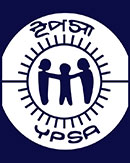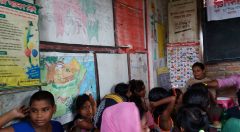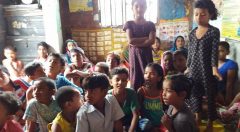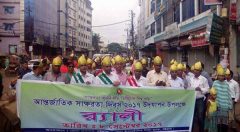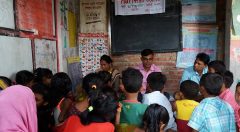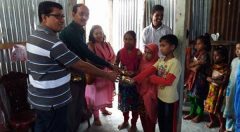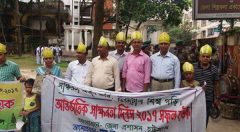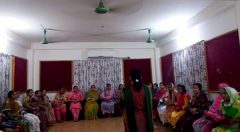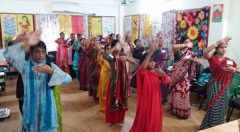Photo Gallery
Project Duration
First phase: 1 August 2017 – May 2018 (Approved)
Second phase: 1 June 2018 – February 2022 (Not final decision)
Background
Despite of the significant progress in enhancing primary education in Bangladesh –I.e. increased enrollment ratio and gender parity at primary and secondary level, marked reduction, repetition and dropout rates, high level of completion primary education, numerous challenges are yet to be addressed. Access to the most marginalized and excluded children are still suboptimal. Primary dropout rates have fallen sharply but remain high (21%), while repetition rates show little change.
Children in the poorest households are twice as likely to suffer from education deprivation (27%) compared to those from the wealthiest households (13 percent). Moreover, some 6.6 million children are out-of school particularly in urban slums and hard-to-reach areas, with 1.1 million of pre-primary school age, 2.56 million of primary school age and rest are lower secondary. Overall, more than 1 in 4 children are out of school (26.8%) and as many as 45% of children are out of school in the worst performing sub-districts.
The problem is acute in poverty stricken and hard to reach chittagong Hill Tracts (CHT). This area is inhabited by a number of ethnic minority groups; speak in several different native languages. Scattered settlements, weak communication systems, lack of transport facilities, high transport cost, linguistic and cultural barriers impede children to get access to schools. A recent study in Dhaka City Corporation found that half of children aged 5 do not attend school in some wards.
Objectives
The major objectives of SCE are;
• To create second chance to complete primary education for the children who are out of school (never enrolled or dropout) for any reasons through flexible learning strategies.
• To create opportunity for the out of school children to integrate in to formal education system at any appropriate level as per their skills and competencies,
• To create opportunity for the missed out children to complete same level of primary education as formal and to attend primary completion exam so that they can enroll in grade six and also can attend skill development courses as appropriate.
• To make the education system responsive to reduce the number of school age children who are out of school and support them to achieve quality primary education.
To supplement this effort of the Government of Bangladesh in achieving SCE plan in line up with SDG goals, BRAC will provide education to the most marginalized and disadvantaged children. The major objectives of this project are directly aligned with the overall principles of BRAC Education program (BEP). BEP operates with the principle to deliver a cost efficient basic education programme of non-formal primary education service to children , their parents and guradians, focusing on specific geographical areas, ensuring synergy with other Government or civil society initiatives and avoiding duplication of efforts.
Beneficiaries
Children aged 8-14 years who are out of school (never enrolled of dropout) for any reason are the participant group for second chance education. The following are some major criteria that program can follow;
• Children who are not enrolled in formal primary school children considering the exclusion dynamics.
• A fair distribution of age and types of out of school children considering the exclusion dynamics
• A fair distribution and boys and girls.
• A fair distribution of geographical locations.
• A focus on most marginalized and excluded children who are difficult to reach not only geographically (hill, Island, coastal, haoretc) but also socially like children with disabilities, children from different ethnic minority groups etc.
But one of the main drive could be to universalized the coverage by addressing all the eligible out of school children in a particular geographical unit such as Upazila.
Expected Results
Result 1: Increased access to cost effective basic non-formal primary education (NFPE) to 20,000 children who are out of school/dropped out/never enrolled in targeted location.
Result 2: Improved performance of the learners who enrolled in grade I and prepare them for further studies.
Result 3: Increased collaboration between local and central level government officials for piloting second chance education by learning and sharing knowledge from each other.
